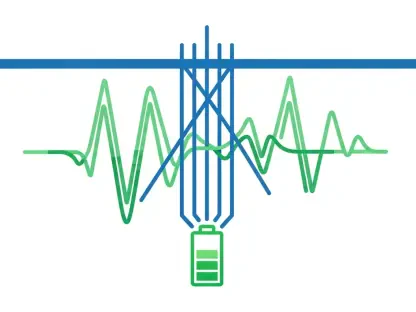In an increasingly digitalized world, the telecom industry faces rising energy demands from the rapid expansion of 5G and IoT devices, making energy efficiency a top priority. The need to optimize energy consumption has become more critical as network operators seek sustainable practices that can scale with technological advancements and market growth. Artificial intelligence (AI) is becoming an invaluable tool in addressing this challenge, enabling smarter, more efficient telecom networks.
The Role of AI in Energy Efficiency
AI-driven technologies offer a multitude of ways to optimize energy use in telecom networks. Through real-time monitoring, sophisticated data analysis, and automated decision-making, AI can enhance operational efficiency while minimizing energy consumption. These capabilities are particularly significant in Asia, where energy demand is expected to increase by 2.9% annually until 2035. The Asian Development Bank (ADB) has highlighted that energy efficiency is the most cost-effective strategy to meet this rising demand.
Real-World Applications and Results
The application of AI in telecom networks is far from theoretical; it has been demonstrated to deliver tangible benefits. According to GSMA, energy consumption accounts for 20-40% of network operating expenses (OpEx) for telecom operators. A case study by Nokia revealed that replacing outdated equipment could improve efficiency by as much as 44%. AI technologies contribute to these improvements by optimizing network load, managing traffic intelligently, and dynamically scaling power usage based on real-time needs.
Case Studies in Asia
Several initiatives across Asia exemplify the successful integration of AI to enhance energy efficiency. For instance, Globe Telecom in the Philippines has utilized AI and machine learning (ML) to reduce energy consumption significantly, which has led to substantial cost savings and lower carbon emissions. Similarly, NTT DOCOMO and SK Telecom are collaborating on research to boost 5G network energy efficiency. Nippon Telegraph and Telephone (NTT) has ambitious plans to create the Innovative Optical and Wireless Network (IOWN) by 2030, aiming for a dramatic 99% reduction in energy consumption by decentralizing data centers.
Collaborative Efforts and Future Prospects
Collaborations between leading industry players further underscore the potential of AI in transforming telecom networks. Nokia and Chunghwa Telecom in Taiwan are working together to optimize 5G networks, while Bharti Airtel and Nokia are deploying energy-efficient technologies in India. Huawei’s initiatives in the Philippines, Thailand, Singapore, and Taiwan focus on developing energy-efficient designs and technologies, showing the widespread commitment to sustainable practices.
Looking Ahead
In our increasingly digital world, the telecom industry is grappling with growing energy demands spurred by the rapid expansion of 5G technology and Internet of Things (IoT) devices. This surge in energy consumption has made energy efficiency a paramount concern for telecom companies. As these networks scale up to accommodate technological advances and burgeoning market growth, the importance of optimizing energy use becomes even more pronounced. Consequently, network operators are seeking sustainable practices that can keep pace with such advancements and growth.
Artificial intelligence (AI) is proving to be a crucial ally in this endeavor. By leveraging AI, telecom companies can create smarter and more energy-efficient networks. AI technologies offer the capability to analyze vast amounts of data in real-time, predict network traffic patterns, and autonomously manage resources. This not only reduces energy consumption but also enhances overall network performance. Thus, as the telecom industry continues to evolve, AI stands out as a vital tool in achieving sustainable and efficient energy usage.









